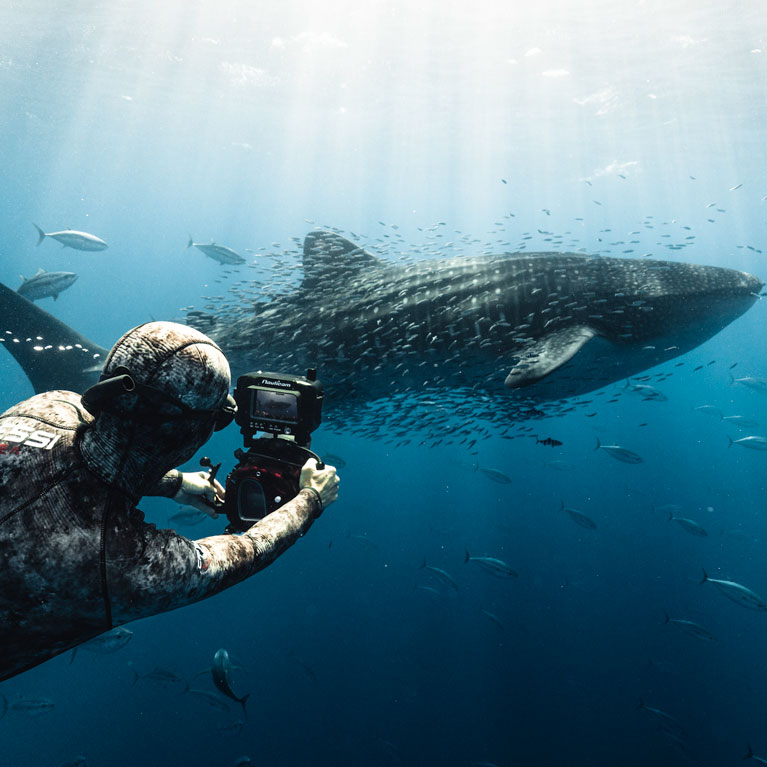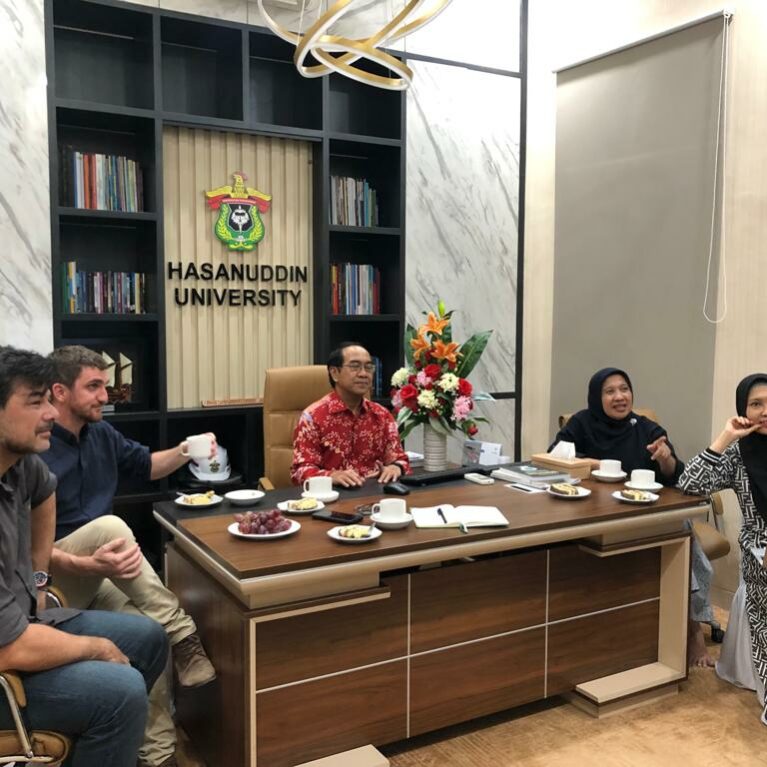Searching for the river sharks and rays of Borneo
Andrew and field researcher Michael Grant will be scouring rivers, local fish markets and landing sites to increase scientific attention on the threatened river sharks and rays of Borneo. Before they go searching for sharks, his team are starting with people: developing relationships with local collaborating Hasanuddin University, and contacting fisheries officers and fishers to collate information on sightings and record data. Their expedition will catch, measure and sample river sharks, as well as record environmental data to assess what habitats these animals prefer. In so doing, this collaborative team will shed new light on this biodiversity hotspot near the heart of the ‘Coral Triangle’.
My fascination for fish and fisheries, especially sharks, began in South-East Asia, where I was born and raised. I acted upon this fascination when I moved to Australia and have been working in marine research since the 1990s, initially in marine ecotourism and subsequently for the Great Barrier Reef Marine Park Authority on coral reef surveys, impact assessments and environmental monitoring for 10 years. I edited the State of the Great Barrier Reef Report and am currently an editor for the journal Pacific Conservation Biology. My research focuses on coastal ecology and fisheries, particularly sharks and rays, interdisciplinary fisheries...


Searching for the river sharks and rays of Borneo
This project aims to help conserve river sharks and rays in Borneo and the incredibly diverse but little-studied area under increasing threat. We aim to find and identify rare river sharks and rays, assess the threats they are facing and work with local partners to identify realistic conservation options.
Indonesian Borneo is among the world’s most iconic UNESCO World Heritage regions. However, by 2050 the capital of Indonesia will be relocated to East Kalimantan, massively increasing human population density and the pressures on Borneo’s river environments through small-scale fishing and commercial developments. Our project will provide baseline information for risk assessments and conservation planning associated with the relocation of the Indonesian capital to inform adequate protection of Borneo’s riverine sharks and rays.
Borneo Island supports the largest expanse of rainforest in South-East Asia and is world renowned for its iconic UNESCO-recognised biodiversity heritage. However, the Indonesian government’s intention to relocate its national capital from Jakarta to East Kalimantan Province by 2050 raises serious conservation concerns. The immigration of people to Borneo will place considerable pressure on the island’s natural resources as urban areas expand and the need for water (consumption, irrigation and commercial use), agricultural land and waste disposal (sewage, commercial and public) and transport infrastructure increases. Approximately 118 species of sharks and rays are known from Borneo. Among these are relatively rare river sharks and rays, including three ray species that only live in freshwater (white-edged whipray, roughback whipray and marbled whipray), four generalist species like the bull shark and giant freshwater whipray, and possibly even the Ganges River shark and largetooth sawfish. These species are currently assessed as Endangered on the IUCN Red List and the Ganges river shark and largetooth sawfish as Critically Endangered. However, the river sharks and rays of this area are little studied and the identifications of some species – potentially globally important records – need to be confirmed. For example, we have recently observed river shark (Glyphis) fins for sale that have come from the freshwaters of eastern Borneo. These fins may represent an unknown population of G. gangeticus (formally described as G. fowlerae in Borneo) or they may be from an undescribed species. While three species have been formally ascribed to the genus Glyphis, a fourth is known from the Mukah River in Malaysia Borneo and possibly also the Sampit River in Central Kalimantan. However, this species has yet to be formally described, due its rarity. It is clear that more work needs to be done to document Borneo’s river sharks and rays and to work out how they can be conserved.
Our project aims to meet five objectives.
Firstly, we will engage with local project partners to ensure that planning for future field trips has local participation and support. These relationships will also form the foundation for building capacity and social capital to conserve Borneo’s river sharks and rays into the future.
Secondly, there are four objectives relating to the collection of data for use in conservation risk assessments. We aim to visit local markets in key regions to understand the characteristics of the fishery, to engage with local fishermen to find out about catch, gear, effort and trade and to enquire about target species. We will distribute a livelihood questionnaire to gain insights into local knowledge about the presence or ecology of elasmobranchs (current and historic); into the cultural or social uses of elasmobranchs, including consumption and sale; and into characteristics of the fishers’ livelihoods, including their reliance on their catches for food and economic benefits and their access to markets. Where target species are reported to occur, we will conduct targeted fishing surveys in collaboration with local fishers.
And finally, in regions where target species are reported or observed, some local fishers will be engaged to report on their fishing activities over an extended period of time. This will give us a better understanding of fishery interactions with target species and enable us to collect data over a longer time period than would be possible through direct field work. In order to achieve these objectives, we will meet with in-country partners to discuss details, roles and target survey areas to maximise engagement with and the participation of local people early in the project. Each of these data-collection techniques will be employed in key environments throughout East, North and West Kalimantan provinces. Special focus will be placed on trying to locate a Glyphis specimen, which will be preserved and transported to the Indonesian Institute of Sciences, Museum Zoologicum Bogoriense, for long-term storage.

